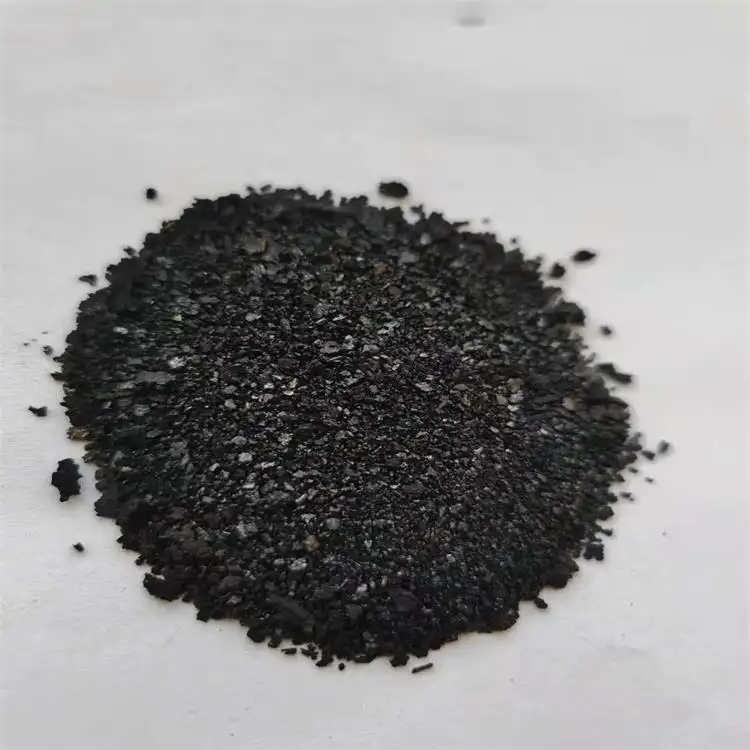indigo dye chemistry
The Chemistry of Indigo Dye A Deep Dive into Its Rich History and Complex Processes
Indigo dye, renowned for its striking blue hue, has been cherished and utilized for centuries across various cultures. Its history is as rich as its color, with roots tracing back over 6,000 years. This article explores the chemistry behind indigo dye, its historical significance, and the intricate processes involved in its extraction and application.
Historical Context of Indigo Dye
Indigo dye has been used in numerous ancient civilizations, ranging from Egypt to India, and later, during the European colonial period. The dye is derived from the leaves of plants such as *Indigofera tinctoria*, which belong to the legume family. The significance of indigo is not just in its color; it symbolizes wealth and status, often used for dyeing textiles and garments of the elite.
The extraction of indigo was originally labor-intensive. Workers would harvest and ferment the indigo plants in large vats, allowing the leaves to oxidize and release the dye. The fermentation process is crucial as it converts the insoluble indican present in the plant into soluble indoxyl, which subsequently oxidizes to form indigo.
The Chemical Structure and Process of Indigo Production
The primary chemical compound in indigo dye is indigotin, which is chemically represented as C16H10N2O2. Indigotin is a complex organic compound that exists in a deep blue crystalline form. The creation of indigo involves several key chemical reactions.
1. Extraction of Indican The process begins with the harvesting of indigo plant leaves. The leaves are soaked in water to extract indican, a water-soluble compound that serves as a precursor to indigo. The chemical formula for indican is C14H15N.
2. Fermentation In this step, the plant material is fermented with a specific bacterial culture, which helps to convert indican into indoxyl, a soluble form. The reaction can be summarized as follows
\[ \text{Indican} \xrightarrow{\text{Fermentation}} \text{Indoxyl} \]
indigo dye chemistry

3. Oxidation Upon exposure to air, indoxyl undergoes oxidation to form indigotin. This step can be described with the following chemical equation
\[ \text{2 Indoxyl + O}_{2} \rightarrow \text{Indigotin} \]
4. Solubilization To dye fabrics, indigo must be solubilized. This is often achieved using reducing agents like sodium dithionite (Na2S2O4), converting indigo into its leuco form, which is soluble in water.
\[ \text{Indigotin} + \text{Reducing agent} \rightarrow \text{Leucoindigo} \]
5. Dyeing The leucoindigo is now applied to fabrics. When the fabric is submerged in the dye bath, it absorbs the leuco form, and upon exposure to air, it reverts to indigotin, depositing the vivid blue color on the fabric.
The Modern Revival of Indigo Dye
In recent years, there has been a resurgence of interest in natural dyes, including indigo, driven by growing concerns over the environmental impact of synthetic dyes. Traditional indigo dyeing techniques are being revived, as artisans and manufacturers emphasize sustainability and eco-friendly practices. Natural indigo is biodegradable, unlike many synthetic alternatives which can lead to pollution and health concerns.
Furthermore, advancements in biotechnology are exploring more efficient ways to produce indigo without the extensive ecological footprint. Scientists are investigating microbial fermentation processes that can potentially yield indigo more sustainably, utilizing genetically engineered bacteria to produce the compound.
Conclusion
Indigo dye encapsulates a fascinating intersection of history, culture, and chemistry. Its complex production process highlights the ingenuity of ancient methods and the scientific principles that underpin them. As society progresses towards sustainability, indigo’s legacy continues to evolve, reminding us of the delicate balance between tradition and innovation. The chemistry of indigo not only creates beautiful textiles but also fosters a deeper appreciation for the rich history and environmental considerations associated with this timeless dye.
-
The Timeless Art of Denim Indigo Dye
NewsJul.01,2025
-
The Rise of Sulfur Dyed Denim
NewsJul.01,2025
-
The Rich Revival of the Best Indigo Dye
NewsJul.01,2025
-
The Enduring Strength of Sulphur Black
NewsJul.01,2025
-
The Ancient Art of Chinese Indigo Dye
NewsJul.01,2025
-
Industry Power of Indigo
NewsJul.01,2025
-
Black Sulfur is Leading the Next Wave
NewsJul.01,2025

Sulphur Black
1.Name: sulphur black; Sulfur Black; Sulphur Black 1;
2.Structure formula:
3.Molecule formula: C6H4N2O5
4.CAS No.: 1326-82-5
5.HS code: 32041911
6.Product specification:Appearance:black phosphorus flakes; black liquid

Bromo Indigo; Vat Bromo-Indigo; C.I.Vat Blue 5
1.Name: Bromo indigo; Vat bromo-indigo; C.I.Vat blue 5;
2.Structure formula:
3.Molecule formula: C16H6Br4N2O2
4.CAS No.: 2475-31-2
5.HS code: 3204151000 6.Major usage and instruction: Be mainly used to dye cotton fabrics.

Indigo Blue Vat Blue
1.Name: indigo blue,vat blue 1,
2.Structure formula:
3.Molecule formula: C16H10N2O2
4.. CAS No.: 482-89-3
5.Molecule weight: 262.62
6.HS code: 3204151000
7.Major usage and instruction: Be mainly used to dye cotton fabrics.

